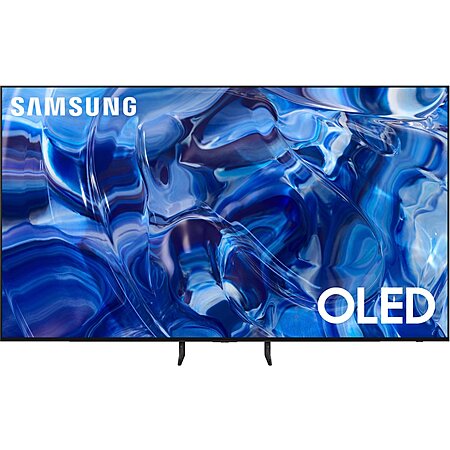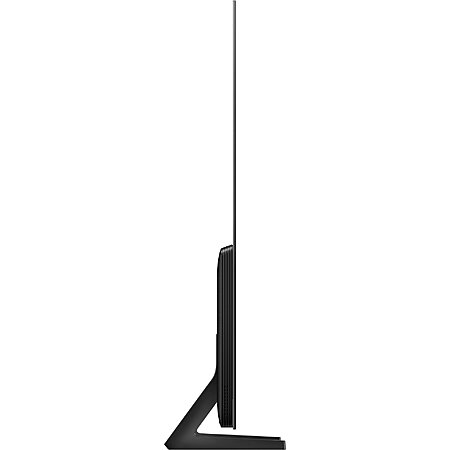_______________________________________________________________________________________
This post can be edited by most users to provide up-to-date information about developments of this thread based on user responses, and user findings. Feel free to add, change or remove information shown here as it becomes available. This includes new coupons, rebates, ideas, thread summary, and similar items.
Once a Thread Wiki is added to a thread, "Create Wiki" button will disappear. If you would like to learn more about Thread Wiki feature, click here.






Leave a Comment
Top Comments
631 Comments
Sign up for a Slickdeals account to remove this ad.
https://www.rtings.com/tv/reviews.../s89c-oled
https://www.rtings.com/tv/reviews.../s89c-oled
Honestly, unless you are a niche customer who needs Dolby Vision, this should be a no-brainer deal for anyone needing/wanting a 77" OLED. You can spend days and weeks scrutinizing and researching, and in the end you'll be happy with this TV.
I can't stand Tizen, but that's just me. Doesn't mean I wouldn't put up with it to get a deal like this. Everyone knows there are several options to use whatever interface you prefer.
As an aside, I never used to buy extended warranties. Ever. Then I had a couple TVs fail on me within a 2 year period, ever since then I've been sure to buy the longest warranty I can get. And Best Buy's 5 year warranty is the best in the industry, and probably more expensive than the other plans as well.
Sign up for a Slickdeals account to remove this ad.
I'm willing to pay a little more if it's that much better. I've always bought Samsung and Sony. Been scared too venture out to other brands.
Just want to know if LG reliability is as good as Sony and Samsung TVs.
So, here's an explanation.
Video files are broken up into color, chroma, and luma, brightness pixel values.
For 4K video files (broadcast, streaming, bluray), the Luma is 3840x2160 size, Chroma is 1920x1080. This is known as 4:2:0 encoding, it saves a little bit of storage space, because the human eye is not very sensitive to high frequency color information, whereas it's very sensitive to the Luma, high frequency brightness information.
DOLBY VISION, assuming Full-Enhancement-Layer, is an extra layer of 1920x1080 parity information which is typically only used to retain more gradation on peak-specular-highlights, very bright pixel values. So, in a middle to darker scene, there's 0% dolby vision, it's not there, the dolby vision layer has 0 information in that scene.
Dolby vision Minimum-Enhancement-Layer (most streaming DV content), is just a tiny text file that tells the TV the brightness of the frames for tone-mapping purposes, there's no enhanced visual video information at all.
In either case, the parity file is completely 100% USELESS, from the consumer point of view.
That extra layer (typically) is set to hundreds of nits+, so it only affects peak highlights. When your eye views very bright highlights, it is not sensitive to such small texture differences. If you pause the scene walk up with your nose touching the screen, and squint really hard, wait for your retina to adjust, you might see a tiny bit of extra fluffiness, but at a distance, while the image is moving, YOU WILL NOT SEE IT.
So, for all practical purposes, if you truly want to Experience_Dolby_Vision. Sit 1 inch away from your TV, and pause every scene with bright highlights, and stare at it for 30 seconds while paused.
Like I mentioned in another post, we are very close to Super Bowl time. Every year, Best Buy gets TVs returned after the Super Bowl and they are then sold as open box with minimal use. Perhaps it's worth waiting for a couple weeks to a month to see if you can score a good deal on an open box. New models are coming in a few months, so I don't think these 2023 model TVs will return to their prior price points, and I don't think the 2023 inventory is at risk of selling out any time soon.
Sign up for a Slickdeals account to remove this ad.
So, here's an explanation.
Video files are broken up into color, chroma, and luma, brightness pixel values.
For 4K video files (broadcast, streaming, bluray), the Luma is 3840x2160 size, Chroma is 1920x1080. This is known as 4:2:0 encoding, it saves a little bit of storage space, because the human eye is not very sensitive to high frequency color information, whereas it's very sensitive to the Luma, high frequency brightness information.
DOLBY VISION, assuming Full-Enhancement-Layer, is an extra layer of 1920x1080 parity information which is typically only used to retain more gradation on peak-specular-highlights, very bright pixel values. So, in a middle to darker scene, there's 0% dolby vision, it's not there, the dolby vision layer has 0 information in that scene.
Dolby vision Minimum-Enhancement-Layer (most streaming DV content), is just a tiny text file that tells the TV the brightness of the frames for tone-mapping purposes, there's no enhanced visual video information at all.
In either case, the parity file is completely 100% USELESS, from the consumer point of view.
That extra layer (typically) is set to hundreds of nits+, so it only affects peak highlights. When your eye views very bright highlights, it is not sensitive to such small texture differences. If you pause the scene walk up with your nose touching the screen, and squint really hard, wait for your retina to adjust, you might see a tiny bit of extra fluffiness, but at a distance, while the image is moving, YOU WILL NOT SEE IT.
So, for all practical purposes, if you truly want to Experience_Dolby_Vision. Sit 1 inch away from your TV, and pause every scene with bright highlights, and stare at it for 30 seconds while paused.
The fun stuff with HDR *is* the specular highlights, and while your technical assessment of how DV achieves that may or may not be correct, to dismiss "specular highlights" as anything less than SPECTACULAR is nuts.
It's the brightest of the brights that really makes a picture pop. And of course, for dark content this won't be noticeable. Just because you can't get the benefits on *all* content doesn't mean you wouldn't appreciate them for *some* content.
That being said.,
I have a library of hundreds of 4K Blu-ray rips that are 50+ GB in size, and I can very clearly tell the difference between a high quality DV source vs a streamed DV source streamed non DV source. This is why I explained "unless you are a niche consumer". For most people, they won't appreciate, or even experience the full capabilities that DV offers. In that regard, I'm not disagreeing with you, but your last paragraph with the bold text is just ludicrous. The picture is only going to be as good as the source material, you feed it a better/higher bandwidth source and you will get more benefits. Also, IMAX enhanced is really nice, I have that on my Sony 77" A80K, it's an 80+ megabit streaming standard. Not exactly as good as the best quality 4K DV Blu-ray's, but it's as close as you can get streaming. Do Samsung or LG even offer imax enhanced? I believe it uses Dolby Vision as part of the standard, so I don't think Samsungs could have it. LG might have it by now, but I haven't checked. I know there is a licensing fee required for manufacturers to support it, probably part of the "Sony tax".
Regardless of my preference for DV and IMAX Enhanced, the Samsung 77" s89c for $1800 is a solid deal.
The great thing about competition is you can do your own research and make an informed decision about what's important to you. If it's best bang for the buck, the Samsung is hard to beat.
I own LG and Sony and here I am telling people the Samsung is a great deal, not pushing the need for DV on anyone. It's nice to have if you maximize your viewing and seek out the best sources. Many people can't be bothered or won't be bothered to do that.
The true enthusiasts will.
Leave a Comment